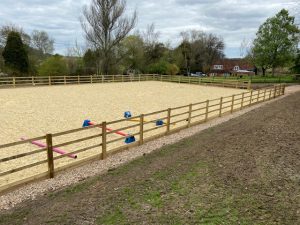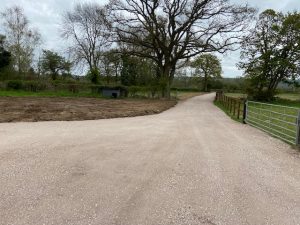In our line of work, we come across a lot of spare wood that can be put to better use – and making firewood is the perfect way to do it. We’ve sold kiln-dried logs in the Butlers’ shop for years now, providing our customers with quality fuel to keep their homes warm in the winter. With the weather hovering around 0℃, now’s the perfect time to go into the process that makes our logs fit for fire. So, let’s explore what the kiln-drying process involves.
Getting ready
Kiln-drying makes wood much more suited to fire, helping it to light more easily while burning hotter and longer. Before logs can be thrown into the kiln, though, they need to be split up so that they will dry more quickly. It also helps to bundle them together afterward, so they can more easily be taken in and out. Once the logs have been properly prepared, they can be loaded into the kiln.
Drying
There’s a few things to keep note of while kiln drying, to make sure that the process works as we need it to. One of these is the temperature the kiln is set to. While a higher temperature means that the logs will dry more quickly, it also makes for a higher fuel cost. Different woods dry at different rates too, so all these factors need to be taken into account when selecting the temperature to heat the wood at. Other things to consider include ensuring the kiln’s supply of fuel stays steady, and that the fans continue to work properly. Assuming everything is functioning correctly, then the entire process should be relatively straight forward.
Storing
There are a couple of ways to check that logs have been dried satisfactorily – banging two together should create a hollow sound, and if there’s any doubt then a firewood moisture metre will give a more accurate reading. The drying process will remove bacteria and mould alongside moisture, so it’s important that wood is stored in a clean, dry place to protect it from the elements. Once they’ve been stored safely, we list our logs in our shop in different sizes, so that you can buy them for your own home.
If you’re in need of kiln dried logs, then get in touch or visit our shop. Supply is limited so get in quick!

 First things first, you need to ensure you’ve chosen the right location for construction, and that it’s large enough for the project. No one needs to be halfway through building their menage only to realise they’ve put it in the wrong place. Horse arenas can be built upon almost any type of ground, but it needs to be level. If it isn’t, the area will need more extensive excavation which will take up a lot of time and money.
First things first, you need to ensure you’ve chosen the right location for construction, and that it’s large enough for the project. No one needs to be halfway through building their menage only to realise they’ve put it in the wrong place. Horse arenas can be built upon almost any type of ground, but it needs to be level. If it isn’t, the area will need more extensive excavation which will take up a lot of time and money.

